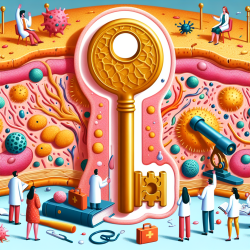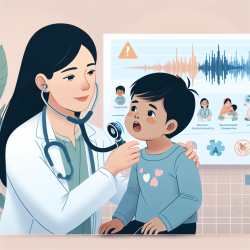As practitioners dedicated to the well-being of children, it is crucial to stay updated with the latest research and implement data-driven strategies. A recent study, "Adapting and validating the Autism Diagnostic Observation Schedule Version 2 for use with deaf children and young people," provides valuable insights that can significantly enhance the assessment and diagnosis of Autism Spectrum Disorder (ASD) in deaf children.
The study, published in the Journal of Autism and Developmental Disorders, addresses a critical gap in diagnostic tools for deaf children. The research team, led by Helen Phillips and Barry Wright, adapted the widely used Autism Diagnostic Observation Schedule (ADOS-2) to be suitable for deaf children, creating the ADOS-2 Deaf adaptation. This adaptation ensures that assessments are culturally and linguistically appropriate for deaf children, who may use a variety of communication methods, including sign language.
Key Findings
- Sensitivity and Specificity: The ADOS-2 Deaf adaptation showed a sensitivity of 73% and a specificity of 71%, making it a reliable tool for diagnosing ASD in deaf children.
- Communication Considerations: The adaptation emphasizes the importance of assessing children in their preferred language, whether it be sign language or spoken language. This approach ensures a more accurate assessment of their social communication skills.
- Cultural Appropriateness: The study highlights the need for culturally appropriate assessment methods, such as modifying tasks that require auditory responses to be suitable for deaf children.
Implementing the ADOS-2 Deaf Adaptation
For practitioners working with deaf children, incorporating the ADOS-2 Deaf adaptation into your assessment protocols can lead to more accurate diagnoses and better-informed intervention strategies. Here are some steps to consider:
- Training: Ensure that assessors are trained in both the ADOS-2 and its deaf adaptation. This includes understanding the nuances of sign language and the cultural context of deafness.
- Collaboration: Work with sign language interpreters or bilingual professionals who are familiar with the ADOS-2 Deaf adaptation. Their expertise can provide valuable insights during the assessment process.
- Customization: Adapt assessment activities to be relevant and accessible for deaf children. For example, replace tasks that require verbal responses with equivalent tasks that can be demonstrated through sign language.
Encouraging Further Research
While the ADOS-2 Deaf adaptation is a significant advancement, continued research is essential to refine and validate these tools further. Practitioners are encouraged to contribute to ongoing studies and share their experiences and findings. This collaborative approach will help build a robust body of evidence, ultimately leading to better outcomes for deaf children with ASD.
To read the original research paper, please follow this link: Adapting and validating the Autism Diagnostic Observation Schedule Version 2 for use with deaf children and young people.










